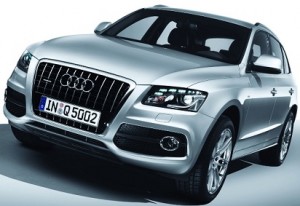How Trimmed Car Inventories Benefit Sirius XM

When the auto industry had massive inventory awaiting dealer delivery or sitting on dealer lots, the money paid for these subscriptions was deferred revenue that does not begin to convert to revenue until the car was sold and the contracted satellite radio service was being delivered. Deferred revenue is not a bad thing in this case. Think of it as revenue in the bank that the company will be reporting in the quarters to come. With the auto industry narrowing the time between manufacture and sale, Sirius XM will be able to convert deferred revenue to revenue in a shorter time period.
Another aspect of the benefits to Sirius XM due to a trimmer OEM inventory model happens on cost side of the house. Sirius XM pays for chipsets to be installed into cars from all brands. The goal for any company is to turn their dollars invested into actual revenue as fast as possible. Cars sitting in massive lots awaiting dealer delivery, as in the past, meant that a radio investment by Sirius XM may have to wait up to six months before the company can see a return on their investment. With the new strategies being implemented in the inventories for car manufacturers, that time lag has been reduced.
Many of the most popular selling cars are not sitting on dealer lots very long. This means that for these vehicles the days in inventory is substantially more narrow, and for Sirius XM, the days that money sits in the deferred revenue line, or simply the number of days Sirius XM has to wait to see a return on their investment also narrows. Some of the most popular selling cars in July also happen to carry a high penetration rate for installations of satellite radio.
– 2011 Audi Q5: 8 days
– 2011 Ford Fiesta hatchback: 8 days
– 2011 Mercedes-Benz GLK 350: 8 days
– 2011 Audi A4: 9 days
– 2011 Ford Fiesta sedan: 9 days
– 2011 Hyundai Tucson: 9 days
– 2011 Jeep Grand Cherokee: 9 days
– 2011 Buick LaCrosse: 11 days
– 2011 BMW 535i: 12 days
– 2011 Chevrolet Malibu: 12 days
– 2011 Chevrolet Traverse: 12 days
– 2011 Porsche Cayenne: 12 days
– 2011 Subaru Legacy: 12 days
– 2011 BMW X5: 13 days
– 2011 Chevrolet Camaro: 13 days
– 2011 GMC Acadia: 13 days
– 2011 Subaru Outback: 13 days
– 2010 GMC Terrain: 14 days
– 2010 Chevrolet Equinox: 15 days
– 2011 Buick Regal: 15 days
The short amount of selling days combined with a trimmer inventory level means Sirius XM can benefit across the board. In deferred revenue conversion as well as number of days to see a return. This shift has not been recognized by very many people as yet, but we will see it playing out over the next few quarters and smart investors will know why some of these things are happening.
Ironically the bankruptcies of some auto makers, and the decline in sales have helped Sirius XM in a way that many simply did not anticipate. It built a model that allows Sirius XM to recoup dollars invested into satellite radio’s faster.
Position – Long Sirius XM Radio





I have read various news accounts of dealerships around the country begging for cars . . In July, one Ford Dealership in Los Angeles asked for 100 Fusions. He received 7!
The dealer is quoted as saying, “I am begging for inventory across the board.”
A Chevy dealership in Michigan said GM isn’t producing enough Equinoxes to meet his requests and says that sales could be “triple or quadruple” current levels if he had adequate supplies.
“This shift has not been recognized by very many people as yet, but we will see it playing out over the next few quarters and smart investors will know why some of these things are happening.”
. . . . David Bank, paging David Bank. David Bank to the conference room please . . .
The auto industry has created a demand factor….This is a good thing. Stability is much better than a roller coaster.
I thought deferred revenue is a subscriber paying for a year instead of monthly and SIRI can only claim it as actual revenue as each month occurs.